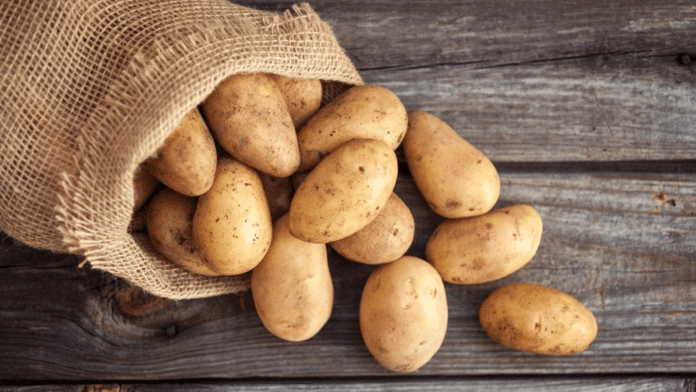The monsoon season brings relief from scorching heat, lush greenery, and a pleasant atmosphere. However, it also presents challenges when it comes to storing perishable food items, such as potatoes. Potatoes are a staple in many cuisines worldwide, and their proper storage is essential to prevent spoilage and ensure a steady supply throughout the year.
Excessive moisture and fluctuating temperatures during the monsoon can lead to potatoes sprouting, rotting, or developing a bitter taste. To overcome these challenges, it’s crucial to implement effective storage solutions. In this article, we will explore various brilliant storage methods that can help you preserve your potatoes’ freshness, flavor, and nutritional value during the monsoon season.
1. Choose the Right Varieties:
Selecting the appropriate potato varieties for monsoon storage is the first step towards successful preservation. Opt for varieties that are known for their good storage capabilities, such as Russet, Kennebec, or Yukon Gold. These varieties have a thicker skin and lower moisture content, making them less prone to spoilage.
2. Cure Potatoes before Storage:
Curing is a crucial step that helps potatoes develop a thicker skin and heal minor cuts and bruises. After harvesting, allow the potatoes to air-dry in a well-ventilated area for about two weeks. This process toughens the skin, reducing the chances of moisture penetration and subsequent spoilage during storage.
3. Proper Cleaning and Drying:
Before storing your potatoes, ensure they are clean and dry. Remove any excess soil gently without damaging the skin. Washing potatoes is not recommended unless they are soiled. If washing is necessary, use cold water and let them air-dry completely before storing. Moisture on the potatoes can lead to rotting, so it’s essential to eliminate any residual moisture before storage.
4. Ideal Storage Conditions:
Creating the right storage conditions is crucial to prevent potatoes from sprouting, rotting, or developing an off-flavor. Here are some important factors to consider:
a. Temperature: Potatoes should be stored in a cool, dark, and well-ventilated area with temperatures between 45°F (7°C) and 50°F (10°C). Higher temperatures accelerate sprouting and spoilage, while colder temperatures can convert starches into sugar, altering their taste and texture.
b. Humidity: Maintain a relative humidity level of 85-90% in the storage area. Higher humidity can lead to excessive moisture and promote rot, while lower humidity can cause the potatoes to shrivel.
c. Light: Exposure to light triggers the formation of chlorophyll in potatoes, leading to green discoloration and the production of solanine, a toxic compound. Store potatoes in opaque containers or cover them with dark cloth or burlap sacks to prevent exposure to light.
d. Ventilation: Adequate airflow is essential to prevent the buildup of moisture and the growth of mold. Avoid sealing potatoes in airtight containers. Instead, use mesh bags, open baskets, or wooden crates that allow air circulation.
e. Separation: Prevent contact between potatoes and other fruits or vegetables during storage. Potatoes release ethylene gas, which can accelerate ripening and spoilage of neighboring produce.
5. Regular Inspection and Rotation:
Regularly inspect your stored potatoes to identify any signs of spoilage or sprouting. Remove any damaged or rotting potatoes immediately to prevent the spread of decay. Additionally, practice a “first in, first out” approach, using the older potatoes first to ensure freshness and minimize waste.
6. Alternative Storage Methods:
If traditional storage methods are not feasible, there are alternative techniques to preserve potatoes during the monsoon:
a. Root Cellar: If available, a root cellar provides an ideal environment for long-term potato storage. It offers cool temperatures, high humidity, and natural ventilation, ensuring optimal conditions for extended shelf life.
b. Clamping: Clamping involves creating an outdoor storage mound for potatoes. Choose a well-drained site, pile the potatoes in layers, and cover them with straw or dry leaves. This method provides protection against excessive moisture and insulation against extreme temperatures.
c. Sand Bed Storage: In this method, potatoes are stored in layers within a bed of sand. Place a layer of sand in a wooden or plastic container, arrange a single layer of potatoes, and continue alternating until the container is full. Sand bed storage offers excellent moisture control and protection against sprouting.
Final Thoughts:
Don’t let the monsoon ruin your potatoes! With the right storage solutions, you can ensure a steady supply of fresh, flavorful potatoes throughout the year. Remember to choose suitable potato varieties, cure them before storage, clean and dry them properly, and create the ideal storage conditions of temperature, humidity, light, and ventilation. Regular inspection and rotation are crucial to prevent spoilage, while alternative storage methods like root cellars, clamping, or sand bed storage can be employed if traditional options are limited. By implementing these brilliant storage solutions, you can enjoy your potatoes even during the rainy season.





